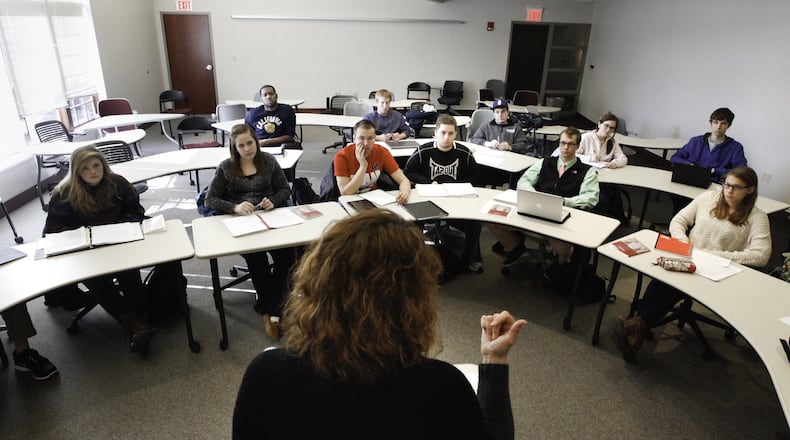FAFSA/By the Numbers
452,629 — FAFSA applications in Ohio for 2016-17 school year, as of June 30
20.5 — Number (in millions) of applications nationwide in 2014-15
71,771 — FAFSA applications filled out for Ohio State for the current school year
Source: U.S. Department of Education
New rules will push high school and college students to apply for federal financial aid in the next few weeks, a change that will allow tens of thousands of Ohioans to receive scholarship and grant information months before they have to make a final decision on a school.
The Free Application for Federal Student Aid, which creates a report that is sent to colleges selected by the student filling it out, can now be completed starting Oct. 1 instead of Jan. 1.
“I think the idea behind it all is to give families more time to evaluate their financial aid options,” said Robert Durkle, associate vice president and dean of admission and financial aid at the University of Dayton.
More than 450,000 FAFSA forms were sent to colleges by Ohioans during the first six months of 2016, according to the U.S. Department of Education.
Students applying for aid can now use tax information from 2015. Previously, students and their families had to use their most recent tax information, so a student applying for aid on Jan. 1, 2016 was required to use tax information that might normally have been filed four months later.
Since students usually are not required to commit to a college until spring, they will have more time to decide where they want to go based on aid being offered.
Deadlines moved
With the FAFSA change, some area universities are moving up their aid deadlines so they can notify students of their need-based financial packages earlier than in years past.
Wittenberg University won’t change its spring deadline to apply for aid, but UD has moved its “early action” deadline up to Nov. 1 so students can receive their offers this winter, Durkle said. Students who apply to UD after the Nov. 1 deadline will still be eligible for aid, but will not find out what they will be offered until sometime in the spring.
Wright State has set its priority deadline for Dec. 1. FAFSAs received after that date won’t be considered for campus-based aid awards.
Wright State plans to begin awarding some financial aid as soon as mid-December, said Amy Barnhart, assistant vice president of enrollment management and director of financial aid. Previously, students had until March to submit aid applications at Wright State.
“The early bird gets the worm,” Barnhart said. “We have to make sure that everybody gets a fair shake.”
Wright State is largely in line with what other public universities in Ohio are doing, Barnhart said. Most have moved up deadlines in order to encourage students to get engaged earlier.
Wright State also plans to send out postcards to prospective students and current students to highlight information about changes to this year’s FAFSA.
“What they need to do is file early,” Barnhart said.
Compare offers
While filling out the FAFSA can be laborious, it is the key to “unlocking financial aid” for students, said Clark Howard, a consumer expert whose radio show can be heard on weeknights on WHIO 1290-AM.
Howard estimates that $3 billion in aid went unclaimed last year because people did not file a FAFSA or did not fill one out completely.
“If students do not complete the FAFSA then there is no chance of them getting financial aid from the school they attend, whatsoever,” said Marion Delatore, career pathways coordinator and head of the guidance department at Centerville High School.
With financial aid, Durkle explained, “School A” may offer a student a $15,000 grant, a $5,000 loan and $10,000 through employment while “School B” may offer $30,000 all in grants. The extra time will allow students and their families to study the differences.
“I’m getting $30,000 at both schools, but I’m getting a better $30,000 at School B because it’s all grant,” Durkle said.
The switch means financial aid applications will coincide more with college applications and admissions, said Randy Green, Wittenberg’s director of financial aid.
Previously, the FAFSA timeline may have confused some students and families because they would not complete the forms until months after applying to schools, Green said.
“It just gives them the opportunity to explore college at the same time,” he said.
Mike Grimaila, the parent of a Centerville High School sophomore, attended a FAFSA information session Tuesday night.
He said he went to the financial aid seminar so he could get a head start. He praised the new FAFSA submission time frame and said it sort of “streamlines” the college application process.
“I think it’s a good thing. It gives you more time,” Grimaila said.
About the Author
